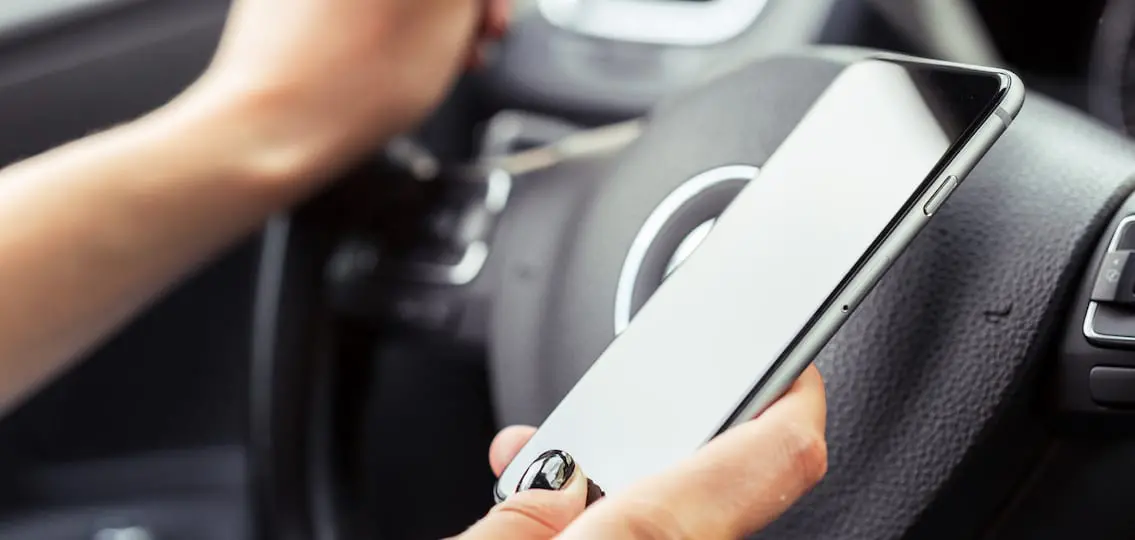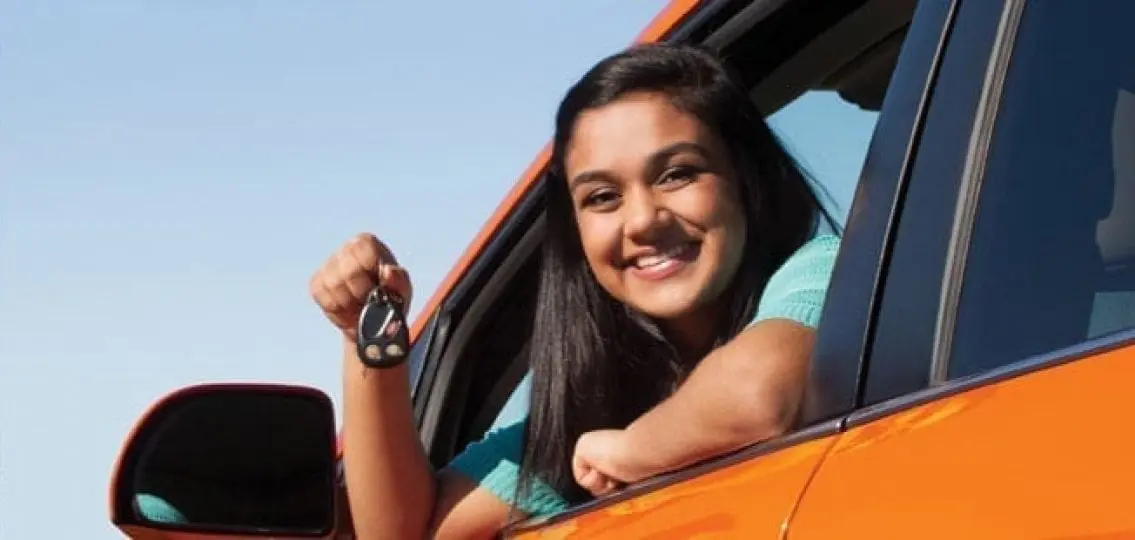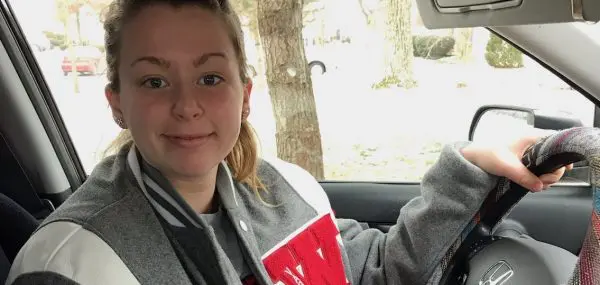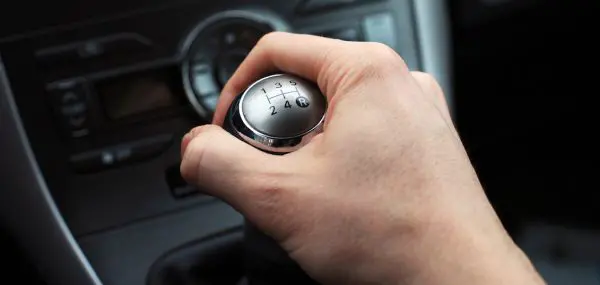There are few places where the push-pull of parenting is more apparent than when it comes to teaching your teen to drive.

Parent: Driving a car is the most dangerous thing that you will ever do.
Teenager: I can’t wait to get behind the wheel.
Parent: I have spent years protecting you from danger, and now I am supposed to hand over the car keys and let you drive away?
Teenager: Um, yes.
For teenagers, driving is the first significant step towards adulthood, freedom, and independence. But make no mistake. The first year or two of driving are also among the most dangerous periods of your teenager’s life.
So, how can parents prepare teenagers to be safe and capable drivers—and keep them that way?
The good news: there are specific, proven steps parents can take to get the results they want.
How to Teach Your Teen to Drive
Motor vehicle crashes are the leading cause of death for U.S. teens. According to the Center for Disease Control’s Motor Vehicle Safety page for Teens, car accidents are the leading cause of death for 16-19 year olds. In 2017, six teens died every day, and hundreds more suffered injuries in car crashes. Compared to drivers 20 and older, the risk of being involved in a fatal accident is three times as great for teens who are 16-19. And new drivers have a crash rate 1.5 times higher drivers who are 18 and 19 years old.
“It’s gut-wrenching, shocking that the problem is still this big,” says David J. Friedman, NHTSA Deputy Administrator. “16- and 17-year olds are far over-represented in fatal car crashes, more so than any other age group.”
According to the AAA, crash data revels that the three main reasons for teen car crashes include speeding, drinking and driving, and distraction. The CDC points to driver inexperience as a major cause of accidents.
Teens driving with passengers are more likely to be distracted behind the wheel than those driving alone. The Children’s Hospital of Philadelphia’s Research Institute states that “the crash risk doubles when teens drive one peer passenger and triples with two or more teen passengers.”
5 Ways to Keep Teens Safe Behind the Wheel:
1. Be a good role model.
“I always tell parents, ‘Be the driver you want your child to be before they start driving,’” says Anne Marie Hayes, author of 3 Keys to Keeping Your Teen Alive: Lessons for Surviving the First Year of Driving. “Your teen will drive the way you do, but with less experience.”
If you eat, use the phone, or speed, then don’t be surprised if your teen thinks that is completely normal driving behavior when they’re learning to drive. “We all know that our kids take their cues from us. From age 8 to 14, you are instilling lifelong habits in your child that will either save or cost them their lives,” says Friedman. Keep this in mind when you are teaching your teen to drive.
Talk about safe driving habits early while you are still the primary influence in your child’s life. Tragically, seat belt use is lowest among teen drivers. In fact, the majority of teenagers involved in fatal crashes are unbuckled. In 2016, 58 percent of teen passengers involved in fatal crashes were NOT wearing their seat belts at the time of the fatal crash. They may think they are invincible, that they don’t need seat belts. They may have a false notion that they have the right to choose whether or not to buckle up.
“Teaching your child while they are young to always wear a seatbelt in the car will instill a good habit that may save their life,” says Friedman.
2. Follow best practices.
When it is time to teach your teen to drive, seek out the best driving school you can find. “Don’t make the mistake of shopping on price and assuming that they’re all giving the same quality of instruction,” says Hayes. Ask around for recommendations.
“Word of mouth of other parents is very effective,” notes Hayes, “and you will hear the good as well as the bad.”
Also key: Familiarize yourself with your state’s driving license requirements. Most states now have “graduated licensing” laws that phase in driving privileges over the course of one to two years. For example, drivers in the “learner”—also called permit or provisional—stage are only allowed to drive with an adult in the car.
However, it’s important for parents to understand that states are not created equal when it comes to adopting “best practices” for graduated licensing. Some states are stringent, while others are much more lax.
If you live in a more permissive state—one that, say, allows a permit at age 15—experts recommend you adopt the more restrictive approach for your own teenager. You can start with the National Safety Council’s recommendations for graduated driver’s licensing (which includes no permit before age 16).
3. Take your time.
At the end of the day, teaching your teen to drive and building a safe, capable driver takes time—a lot of time—behind the wheel.
“The only thing that removes your teen from that high risk group is experience,” says Ned Overbeke founder of Overbeke Driving School.
That’s why parents must prepare themselves mentally to spend lots of time driving with their teenager. Many states require 50 hours of supervised in-car experience, but “that is a bare minimum. A hundred hours would be better,” says Hayes. “New drivers have to think about every single step because they have no experience. The more they drive, the less they will have to think about each step,” adds Hayes.
| [adrotate banner=”99″] |
It’s also important to think of where to practice driving. Plan out driving routes, starting on quiet streets. Talk about how to do everything. Explain how to change lanes. Talk about how to approach an intersection. What to do at a yellow light. And so on. Remember, your teenager needs to learn about every possible situation he or she may encounter behind the wheel.
“I took my daughter out driving for the first time on icy streets in a Suburban,” recalls Jill, a mother of five. “She didn’t even know how to use the brake, and she ran right into a tree. I tried to teach her a lesson about being careful—and $3,000 later, I learned that I was an idiot.”
4. Keep watching.
The big day arrives and your teenager earns her license. Don’t relax just yet. In fact, say experts, parents should keep newly minted drivers need on a short leash.
“Having a license means that your kid has met the bare minimum for competency,” says Overbeke. “He is the same inexperienced driver seven minutes after he gets that license that he was before.”
Restrict new drivers to familiar places that they know how to get to without GPS, recommends Overbeke. “A new driver has no skills, and when they get lost, everything just goes out the window.”
Also, continue to supervise your teenager as an in-car passenger. No big trips downtown, across town, or on the highway until they have more experience. Enforce the GDL recommendations for the first year your teenager is driving: only one teenage passenger in the car and no driving after 10 P.M.
5. Have a driving agreement.
Last but not least, consider a written Parent-Teen Driving Agreement in which you spell out the rules. The NHTSA recommends its “5 to Drive” plan: (1) Cell phones turned off and put out of reach (2) Observe speed limits (3) No extra passengers (4) No alcohol (5) Always buckle up. Have your teen sign it, and post it on the wall near the keys. If your teenager breaks a rule, then consider taking the keys away for a period of time.
What if your teenager doesn’t want to drive or take the final step to licensure (i.e. the test)? Don’t push if your teen is not emotionally or psychologically ready. Instead, consider more lessons from an instructor and additional practice to build the teen’s confidence.

“I give a teen about a year if they aren’t psychologically ready,” says Overbeke. “But in our society, a driver’s license is an economic and social necessity. Then it’s time to get a good instructor and help them through whatever anxiety or fear they are experiencing.”





